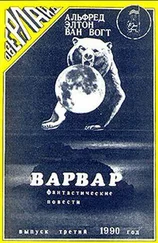The Balinese women leave their breasts bare. They are not all completely unapproachable. Nevertheless, if something has displeased them, it is not sorrow, nor anger, nor sulking that reveals the fact, but an offended look, the look that one knows so well, that belongs only to proper people; and if she does something wrong, she immediately has the impression not of wrong but of impropriety, and I could tell a personal anecdote about this the main theme of which makes me laugh heartily every time I think about it.
Nothing about the Malay is offensive. His face does not reveal abnormal appetites, vices, or defects in his character.
The Malay forgets many things. He forgets everything that is said to him. He will never forget to walk properly. He is proper to the depths of his soul. And the Javanese even more so.
The Javanese without his little scarf properly arranged on his head would not dare to go out.
And when he goes out, he swings his arms a great deal, dangling them. You will not see him playing the fool. No indeed.

The Javanese has something about him that does not go forward, but backward.
The Javanese face seems as though it had been wrought like the pebbles in torrents, polished by continual rubbing.
His face has suffered a setback.
Not only is his forehead rounded, but an eternal hand seems to be placed on him, pressing him down and holding back his personality.
Foreheads that do not fight, foreheads that escape and all they ask is to turn back.
His face is hollow like a saucer, not bellicose but submissive; the nose is turned up, yet wide and flat at the end; the head of an orang-outang, and often the head of a frog.
The face of the Javanese woman is marvelously obedient, restful, almost musical.
All Malayan things express a particular fondness for the cockspur form, almost an obsession with them (and joined to the stiff, upright prow, but a prow placed behind).
The cockspur is one of the few natural weapons in the animal world that is turned in a backward direction.
The hilt of the kriss is in this well-known shape.
The roofs of the houses of the Minangkabau, in Sumatra, resemble waves fastened down. The wave starts, dashes on, there it is at its maximum, at its crest. It is going to break at the point where the roof ends. The roofs rolling away are a magnificent sight; they have as many as twenty crests.
The Javanese hat has two oblique points.
The Javanese actor is one of the few people in the world who wears his chief ornament in the back.
And this pointed ornament that he has on his shoulders, a sort of prow (no stern), a singular thrusting-out from the shoulders, rather makes one think of the exaggerated animation of the wagtail’s behind.
Balinese actors almost always turn their backs to each other; even if it is a prince courting a princess, progress is parallel, they never turn round.
The Javanese and the Balinese go along the road in single file (even where there is no danger whatever from traffic), talk to each other without moving their heads; nor will anybody who calls out to them in passing make them do so. If hailed, they always manage to avoid turning round, so odious would this lack of deportment appear to them.
They sit with faces turned toward their houses, their backs to the road, as if they had an eye in their shoulders. In many cases, indeed, in their shoulders, something is there that we lack.
In their music the pentatonic scale is used, the flat scale, the scale that does not get stuck.
Nowhere in the world is there music less catchy than the Balinese and Javanese gamelan . The gamelan utilizes only percussion instruments. Gongs, muffled drums (the tredang), metal kettles (trompong), metal disks (the gender).
Never do these instruments tell or take hold. But they are not so much percussion instruments as instruments of emerging sound; the sound emerges, a round sound that comes to pay a visit, floats around, then disappears. The resonance is stopped by the fingers, feeling their way, seriously, attentively, in the great carcass of sound.
Even the dancers who tell of the love of a prince and a princess tell nothing at all. This is the prince, this is the princess. And they push each other away instead of coming together.
The Balinese dance is a dance with the hand held flat, a dance with the palms open. It neither gives nor rejects, it gropes along the invisible walls of the atmosphere. It is spread out and blind.
The pupils seek the corner of the eye, go to the extreme end, change place in a lateral movement. The neck is dislocated laterally, nothing goes forward; everything aspires to the horizontal, to the immense, to the mural, to a sort of immense façade , for everything moves in a space that is absolute and mural. Most of the time the dancers are held by their knees to the ground, tortured there on the spot (by degrees, impatient movements on the spot, shudders like the ripples on a lake, hypnotism, delirium without frenzy, a sort of petrification, of stratification, of the inner self). A music that covers, that covers one in darkness, and in which one finds rest and support.
And who is responsible for this music? Men? No, in Bali, all that resounds, plays, lives, terrorizes, vibrates, comes from ‘the demons.’ 1
BALI
The Dutch are perfectly delighted to possess an island where the women’s breasts are bare. 2So once and for all they have forbidden the entrance of the island to missionaries, who would promptly have had the breasts hidden, destroying at the same time any interest the place might have had for the tourist. If a missionary does come, it has to be secretly, in the strictest incognito and with false passports, like a Russian Communist.
Are we so much in need of demons? When one arrives in Bali, from Koeboetambakan on, one is enchanted. There are demons everywhere, at the entrance of temples, of houses.
Men, animals, plants — no, decidedly that does not make a world; one must have demons. Carving a demon means adding something to the population of the island. But to carve women and men, what is the use? Just as if one did not know them, as if one had never seen such a thing. ..
And in the Javanese countryside, a woman with her breast quite naked is not an unheard-of sight.
Besides, their demons in Bali are not irritating and idiotic like those of Southern India, they are quite orderly and they hold a club in their hand, look more as if they were bluffing than really terrible; are not at all frightening, and take part, in spite of their grimaces, in a certain gaiety such as may be found in a pleasant tropical island. The Balinese people live with the demons. There is one at the door of every house. They could not do without it; it is their presence that makes a cremation so interesting. But I am not acquainted with the symbolism of the ceremony.
Some of them (represented by Balinese) catch hold of the coffin, the shroud, with a few bamboos around it; there are forty-odd of them and the struggle begins. The object of certain ones is to reach a platform where the corpse, when it gets there, will enjoy about half an hour’s quiet. (The object of the others is to prevent this.) But now the struggle is at its height, a scrimmage in which the coffin gets lost while at the same time the fighters’ heads go down, plunge as in football — scrimmage from which a drowned man’s head emerges from time to time, a head overcome by a pathetic and rather decorative fatigue, nearly a faint; out of which also arise suddenly proud faces! ‘Oh! no, you shan’t have it. No indeed. Just come and see…’ curt challenges follow, a certain lack of actual rage. Thereupon the steps leading to the platform are approached. Ha! none of that. It is too soon!
Читать дальше













